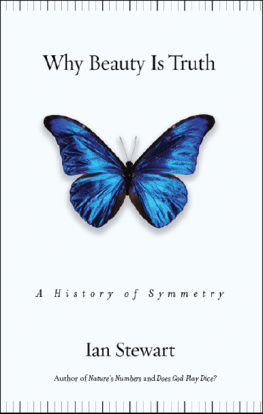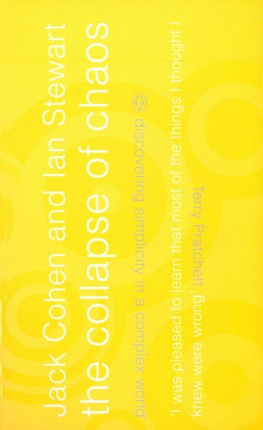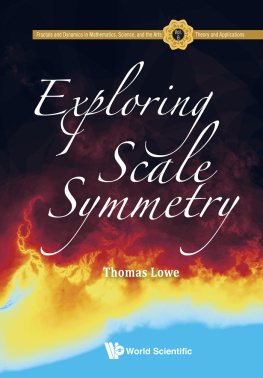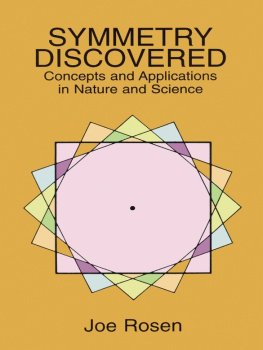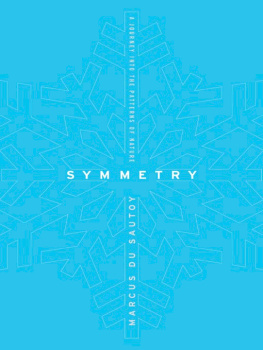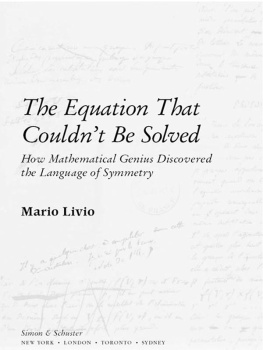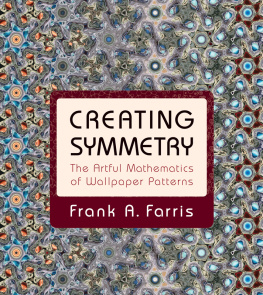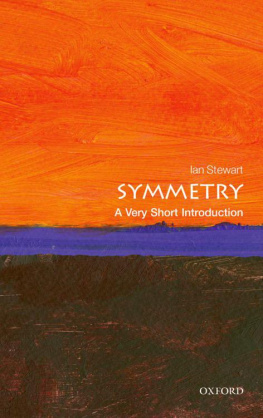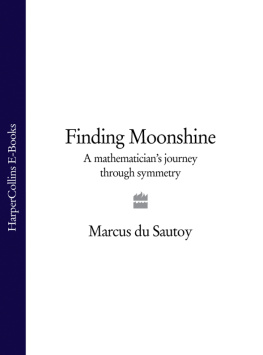WHY BEAUTY IS TRUTH
WHY BEAUTY IS TRUTH
A History of Symmetry

IAN STEWART

A Member of the Perseus Books Group
New York
Copyright 2007 by Joat Enterprises
Published by Basic Books
A Member of the Perseus Books Group
All rights reserved. Printed in the United States of America. No part of this book may be reproduced in any manner whatsoever without written permission except in the case of brief quotations embodied in critical articles and reviews. For information, address Basic Books, 387 Park Avenue South, New York, NY 10016-8810.
Books published by Basic Books are available at special discounts for bulk purchases in the United States by corporations, institutions, and other organizations. For more information, please contact the Special Markets Department at the Perseus Books Group, 11 Cambridge Center, Cambridge MA 02142, or call (617) 252-5298 or (800) 255-1514, or e-mail .
Designed by Jeff Williams
Library of Congress Cataloging-in-Publication Data
Stewart, Ian, 1945-
Why beauty is truth : a history of symmetry / Ian Stewart.
p. cm.
ISBN-13: 978-0-465-08236-0
ISBN-10: 0-465-08236-X
1. SymmetryHistory. I. Title.
Q172.5.S95S744 2007
539.7'25dc22
2006038274
10 9 8 7 6 5 4 3 2 1
When old age shall this generation waste,
Thou shalt remain, in midst of other woe
Than ours, a friend to man, to whom thou sayst,
Beauty is truth, truth beauty,that is all
Ye know on earth, and all ye need to know.
JOHN KEATS, Ode on a Grecian Urn
CONTENTS
T he date is 13 May 1832. In the dawn mist, two young Frenchmen face each other, pistols drawn, in a duel over a young woman. A shot is fired; one of the men falls to the ground, fatally wounded. He dies two weeks later, from peritonitis, aged 21, and is buried in the common ditchan unmarked grave. One of the most important ideas in the history of mathematics and science very nearly dies with him.
The surviving duelist remains unknown; the one who died was variste Galois, a political revolutionary and a mathematical obsessive whose collected works fill a mere sixty pages. Yet Galois left a legacy that revolutionized mathematics. He invented a language to describe symmetry in mathematical structures, and to deduce its consequences.
Today that language, known as group theory, is in use throughout pure and applied mathematics, where it governs the formation of patterns in the natural world. Symmetry also plays a central role at the frontiers of physics, in the quantum world of the very small and the relativistic world of the very large. It may even provide a route to the long-sought Theory of Everything, a mathematical unification of those two key branches of modern physics. And it all began with a simple question in algebra, about the solutions of mathematical equationsfinding an unknown number from a few mathematical clues.
Symmetry is not a number or a shape, but a special kind of transformationa way to move an object. If the object looks the same after being transformed, then the transformation concerned is a symmetry. For instance, a square looks the same if it is rotated through a right angle.
This idea, much extended and embellished, is fundamental to todays scientific understanding of the universe and its origins. At the heart of Albert Einsteins theory of relativity lies the principle that the laws of physics should be the same in all places and at all times. That is, the laws should be symmetric with respect to motion in space and the passage of time. Quantum physics tells us that everything in the universe is built from a collection of very tiny fundamental particles. The behavior of these particles is governed by mathematical equationslaws of natureand those laws again possess symmetry. Particles can be transformed mathematically into quite different particles, and these transformations also leave the laws of physics unchanged.
These concepts, and more recent ones at the frontiers of todays physics, could not have been discovered without a deep mathematical understanding of symmetry. This understanding came from pure mathematics; its role in physics emerged later. Extraordinarily useful ideas can arise from purely abstract considerationssomething that the physicist Eugene Wigner referred to as the unreasonable effectiveness of mathematics in the natural sciences. With mathematics, we sometimes seem to get more out than we put in.
Starting with the scribes of ancient Babylon and ending with the physicists of the twenty-first century, Why Beauty Is Truth tells how mathematicians stumbled upon the concept of symmetry, and how an apparently useless search for what turned out to be an impossible formula opened a new window on the universe and revolutionized science and mathematics. More broadly, the story of symmetry illustrates how the cultural influence and historical continuity of big ideas can be brought into sharp relief by occasional upheavals, both political and scientific.

The first half of the book may seem at first sight to have nothing to do with symmetry and precious little to do with the natural world. The reason is that symmetry did not become a dominant idea by the route one might expect, through geometry. Instead, the profoundly beautiful and indispensable concept of symmetry that mathematicians and physicists use today arrived via algebra. Much of this book, therefore, describes the search for solutions of algebraic equations. This may sound technical, but the quest is a gripping one, and many of the key players led unusual and dramatic lives. Mathematicians are human, even though they are often lost in abstract thought. Some of them may let logic rule their lives too much, but we shall see time and again that our heroes could in fact be all too human. We will see how they lived and died, read of their love affairs and duels, vicious priority disputes, sex scandals, drunkenness, and disease, and along the way we will see how their mathematical ideas unfolded and changed our world.
Beginning in the tenth century BCE and reaching its climax with Galois in the early nineteenth century, the narrative retraces the step-by-step conquest of equationsa process that eventually ground to a halt when mathematicians tried to conquer the so-called quintic equation, involving the fifth power of the unknown. Did the methods break down because there was something fundamentally different about the quintic equation? Or might there be similar, yet more powerful methods that would lead to formulas for its solution? Were mathematicians stuck because of a genuine obstacle, or were they just being obtuse?

